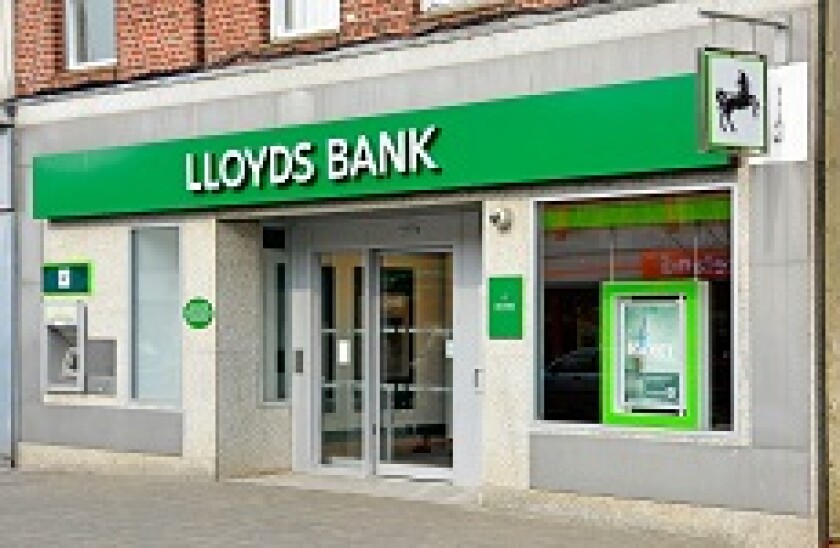Before the Covid-19 pandemic struck, Lloyds had been active in the covered bond market in late January with a £1bn three year covered bond which was priced at 37bp over Sonia, which in hindsight, proved competitive funding.
It returned in late March with a €1.5bn six year non-call five senior trade from its holding company, tightening pricing by 25bp from the initial level to a reoffer spread of 375bp.
And, at the start of April Lloyds Banking Group became the first Yankee bank to access dollar market for almost a month when it launched a $1.5bn 5.25 year deal at 350bp over US Treasuries.
At the same time Lloyds Bank Corporate Markets issued a new euro senior benchmark, jumping into the market following a strong performance in credit spreads that week.
“We have made good progress year to date with around £7bn of funding completed,” said Peter Green, the bank's head of senior funding and covered bonds, who confirmed that further wholesale funding was likely to be limited.
Full year guidance for Lloyds’ 2020 term funding was set at the lower end of a £10bn-£15bn range, with this requirement being split across Lloyds Banking Group, Lloyds Bank and LBCM.
“The introduction of TFSME is likely to remove any further term wholesale funding needs for Lloyds Bank plc this year,” he said.
The Bank of England’s Term Funding Scheme with additional incentives for SMEs (TFSME) was announced by the Bank of England on March 11 alongside a comprehensive package of other measures.
The programme offers banks four-year funding over the next year, equating to at least 5% of their stock of real economy lending. As the funding directly competes with wholesale market funding and is much cheaper, it will suppress issuance volumes.
“We are supportive of and welcome the BoE and government schemes,” said Green. “They help us to continue to support our customers in line with the [Lloyds's] Helping Britain Prosper strategy.”
Despite initially entering the senior market when conditions were particularly stressed Green described his experience of funding through the crisis as “favourable,” noting that credit markets had remained “resilient despite volatility”.
Green said the three senior deals issued in the past month had received strong support from investors, noting that primary markets had been particularly strong in the US “with a good performance in trades over the past couple of weeks as global stimulus measures have helped to stabilise markets.”
Capital optimisation
Lloyds has also undertaken a number of liability management exercises.
On April 1 Lloyds Bank announced plans to buy back one of its more costly perpetual tier one capital instruments, after its valuation collapsed in March.
According to Liz Padley, who heads up the bank’s capital structuring and holding company, this and other similar exercises had “provided investors with market liquidity, at a time of market dislocation, whilst maintaining a prudent approach to the management of the bank’s funding and liquidity.”
On March 4, Lloyds gave investors a chance to switch out of a legacy tier two deal and into a new instrument, without the basic terms of their securities changing.
Lloyds will continue to consider opportunities to optimise its portfolio of legacy capital securities as these have “become inefficient from both a capital and MREL perspective,” said Padley.
With the active liability management of legacy securities, which Padley described as “inefficient and expensive,” Lloyds had strengthened the group’s capital position “and, in doing so, provided more scope for supporting customers”.
She said that the decision to conduct such exercises was driven by “a wide range of factors including capital requirements, MREL, rating agency credit, maturity profiles, P&L impacts, and overall costs”.
RWA up and rising
In its first quarter results Lloyds said that it had maintained a focus on risk weighted asset reduction, but acknowledged that balances across its commercial portfolio had increased as clients drew down facilities in response to the coronavirus outbreak.
Around 50% of revolving credit facilities in commercial banking are now drawn, compared to just under 40% at start of the year, representing an increase in lending of £6bn.
As of April 24, Lloyds Group said it had granted in the region of 400,000 mortgage payment holidays on loans with an average loan to value ratio of 50%. Payment holidays have also been granted on around 85,000 in motor finance loans, 175,000 personal loans and 220,000 credit card loans.
Lloyds also provided £410m of support through the Coronavirus Business Interruption Loan Scheme and increased client support through its £2bn Covid-19 fund which has provided around 37,000 fee-free overdrafts and repayment holidays.
As a consequence risk-weighted assets have increased by £5.3bn — a number that Lloyds says will continue to be affected by credit migration and any potential increases in the balance sheet.
